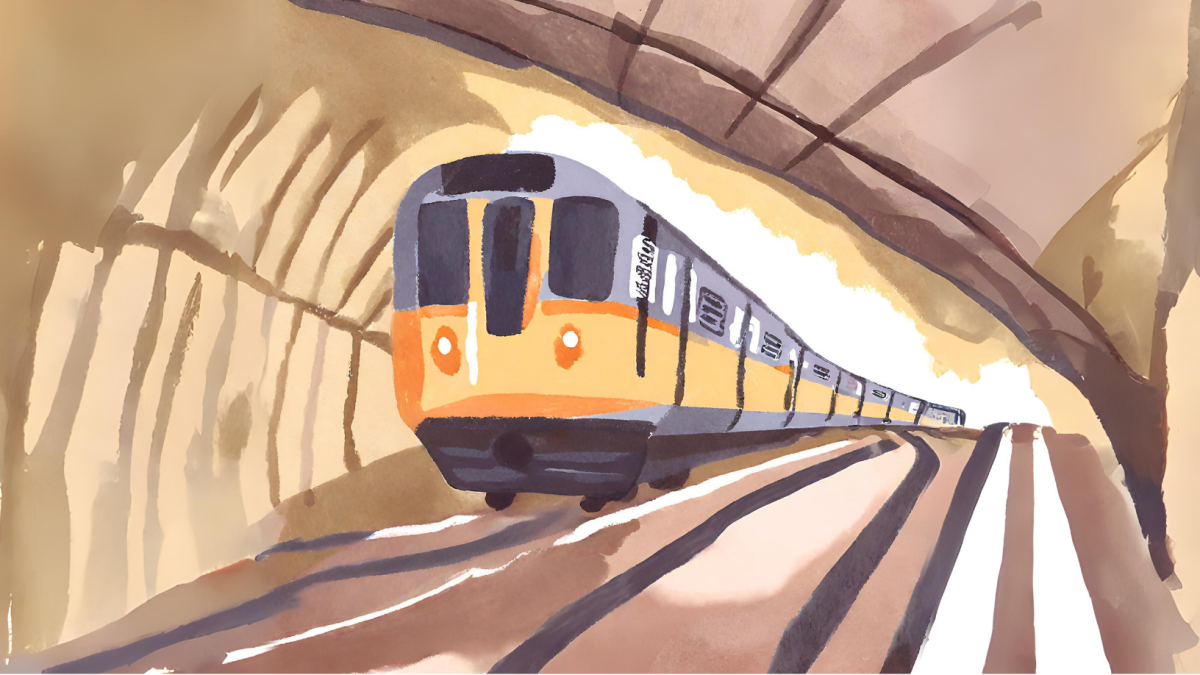Often, public transportation is a suggestion for alleviating the current issue of climate change as the fumes from car emissions further aggravate the current situation. Yet, many still abstain from following this suggestion and opt for transportation by private vehicles instead. As this continues, it becomes increasingly evident that it is time for America to look abroad for inspiration and transform its public transportation system, which can ultimately become our ticket to a cleaner, more sustainable future.
While the use of personal vehicles remains deeply ingrained in America’s lifestyle, with over 80% of Americans using private cars to commute to work or school from 2022 to 2023, there are explanations for why people prefer using their cars over public transportation. One such explanation is the level of convenience personal vehicles provide us. With private cars, one can decide their departure time, not be required to travel to a distant bus or metro stop, and remain in a clean and comfortable setting.
Furthermore, according to the American Public Transportation Association (APTA), 45% of Americans do not have access to public transportation. This reveals how, despite the frequent recommendations of taking public transportation to assist the current battle against climate change, the current American public transit system does not allow this to be a reality.
Due to the numerous inconveniences, people will find excuses and think, “Someone else can take the bus or metro instead,” or “Driving my car does not have that big of an impact.” The U.S. transportation sector accounted for 33% of greenhouse gas emissions— the most prominent domestic contributor to climate change. In comparison, in South Korea, a country with a regularly used public transportation system, transportation accounted for only 14% of greenhouse gas emissions.
Overall, in the present day, it has become common knowledge that public transportation is better for the environment than using private vehicles. With that said, how should America learn from foreign countries? What changes should be made to the current public transportation system?
To begin, public transportation in America is inconvenient, and many people must trek to their nearest station before boarding the bus or metro. So, public transit needs to expand and ensure that people have access to transportation that is convenient for them, whether this entails developing the current bus system, implementing a more widespread subway system, or increasing the frequency of buses or subway cars. These services must be more readily available for people to favor them over driving their own vehicles.
For instance, countries such as Japan and China or even cities like Hong Kong already have extensive subway systems, and it is often more convenient to take the subway than driving in traffic-filled streets. The stations are close to people’s homes and are clean. Some even contain areas with food stores. Even more, the subway cars are fast and punctual. America should learn from these countries and follow suit, improving our system by observing what other countries have done and adapting them to our needs.
One of these things can include Hong Kong’s ongoing mission to decarbonize its road transport system by fostering the electrification of franchised buses and the electrification of private cars. America can learn from these processes and implement these strategies, as the electrification of franchised buses can assist them with the current situation. While not everyone can purchase electric cars, if America pursues the electrification of franchised buses and expands the bus system, more people can access vehicles that will not emit greenhouse gasses.
As someone who has experienced public transportation in both America and a foreign country, it is interesting to see how inconvenient it is to use public transit in the U.S. compared to other countries.
When visiting China, the closest bus station was often 10 minutes away, and it was surprisingly easy to determine which bus to take, which stop to get off at, or even when to transfer to a different bus line. All of this information was listed on a board at the bus stop. Meanwhile, all this information is online and typically challenging to decipher in America. The bus stop usually does not have this information, except for which buses stop at that location.
Ultimately, this inconvenience deterred me from using the bus as I would be concerned about whether the information I had was correct. Even more, having all the information online can make it difficult for those who do not have access to a device at all times.
Although transforming the public transportation system may be our way to a more sustainable future, many are concerned about pursuing these changes. Two of these concerns are the expenses created by this transformation and the possible greenhouse gas emissions from these expansion projects.
Regarding concerns over expenses, this should not prevent America from pursuing a cleaner and more sustainable future. Although it may exact a heavy cost, transforming public transportation is necessary to combat climate change. Furthermore, according to the APTA, “every $1 invested in public transportation generates $5 in economic returns,” and “every $1 billion invested in public transportation supports and creates approximately 50,000 jobs.” Ultimately, transforming the public transportation system would provide economic gains alongside a more sustainable lifestyle, and we would invest in the future.
About the possible greenhouse gas emissions, expanding the system—by having more buses or building upon the current subway system— may cause a temporary increase in emissions. It is similar to the economic concerns where they are both investments in the future. In these situations, America can look to other countries, such as Hong Kong. As mentioned earlier, Hong Kong is fostering the electrification of franchised buses, so if America chooses to expand the current system, it can integrate more e-buses instead of gas-powered ones.
Overall, America can address the excuses and inconveniences associated with public transportation by drawing inspiration from foreign countries that have already succeeded in transforming their systems. By enhancing convenience and expanding access, America can usher in a new era of cleaner, more efficient transportation and win us our ticket to a more sustainable future.












